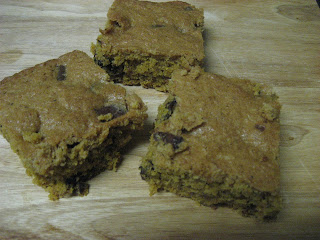*Spicy Daikon Radish and homemade Spicy Tofu from Dave's Gourmet Korean Food. He's a tiny man with a big smile and he sells at the Hollywood, Mar Vista, and Culver City Farmer's Markets in L.A.
*The Know It All: One Man's Humble Quest To Become The Smartest Person In The World, a book by A.J. Jacobs - you'lll feel vicariously foolish and giddily well-informed as you read the author's hilarious account of reading the Encyclopedia Britannica
*Free archery at Rancho Park
*O Ya Restaurant the most amazing sushi on the planet - you may just feel the need to kiss the sake sommelier (who by the way is kind of sultry in the I'm-the-wife-of-the-head-chef-and-far-more-learned-than-you-shall-ever-be-in-the ways- of-rice-polishing-and-approachable-aloofness
*Watching episodes or clips of Summer Heights High on the boob tube or YouTube - a meditation on Aussie insanity
*A board game called Wise and Otherwise
*Listening to Elton John's Greatest Hits, the Beach Boys' Pet Sounds, Sharon Jones and The Dap Kings, and The Zombies on repeat - don't knock it until you try it
*Films (but I will admit that some of them are just great MOVIES): The Curious Tale of Benjamin Button, The Dark Knight, Enchanted, Hamlet 2, Happy Go Lucky, Kung Fu Panda, Milk, Slumdog Millionaire, The Visitor, Wall-E, Young At Heart
*Lillet blanc on the rocks before a nice meal

*Reading D'aulaires' Book of Greek Myths until you've memorized the illustrations and the saucy stories in this book intended for children but too good to be just for the kids
*The incredible singing Christmas card that both my best friend and brother purchased for me playing one of my favorite songs of all time: I Want A Hippopotamus For Christmas
Warning: the timbre of the singer's voice may cause nausea or an inexplicable need to urinate
*My new feather headband - which I've worn for the past week with total disregard for the color of my outfit and whether or not people have seen me with this same accessory in the very recent past. The headband may be causing some severe soreness in the area behind my ears, which I will continue to pass off as a symptom of too many holiday drinks and wearing my eyeglasses which I have NOT worn in the past week because that's just way too much stuff being perched upon the ole cranium
*The word lollygag - saying it over and over is kind of hypnotic and ridiculous (this is probably something you may want to chant in the shower when no one else is home - Nam Myoho Renge Kyo is sooooooooo 1253 AD). If you are into history you may be interested in the fact that "lollygagging" was slang for "fooling around" (sexually) in the beginning of the 20th century. Presently, "lollygag" doesn't have that naughty connotation, but back in the 40's, one Navy captain issued this warning: "Lovemaking and lollygagging are hereby strictly forbidden.... The holding of hands, osculation and constant embracing of [women], is a violation of naval discipline...."


































